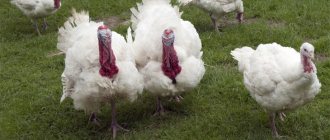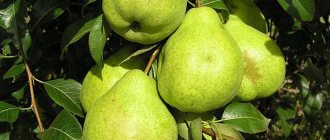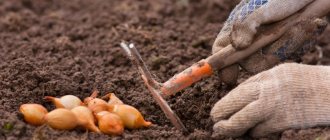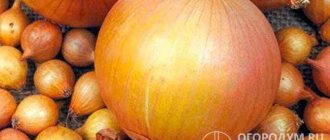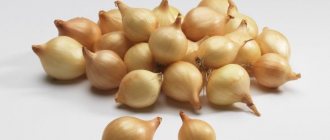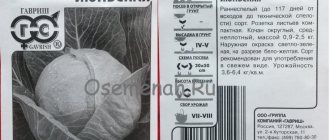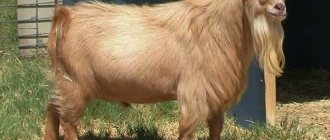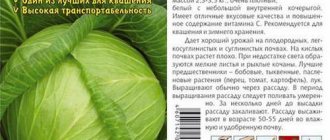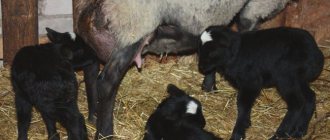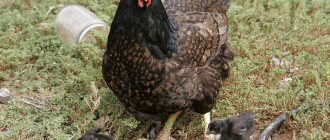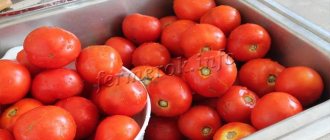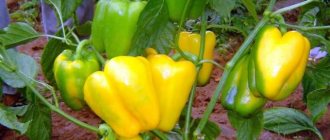From the history
The Bashkir breed, whose history began in the 17th century, received the name of the country in which it was bred - Bashkiria. And due to the fact that it borders on the Ural lands, horses began to spread and be actively used in Siberia. The main role of Bashkir horses was to deliver mail, because they easily covered long distances thanks to their endurance, hard work and unpretentiousness.
Horses of the Bashkir breed quickly gained popularity. They began to be bred in the Samara, Perm and Kazan provinces, where they were harnessed in threes to cover long distances. After all, animals could gallop up to 150 km in eight hours without stopping or feeding.
Maintaining Bashkir horses did not cause any trouble. They were driven out to pastures all year round and fed on their own, and for the winter hay was prepared for them and shelters were installed in which horses could shelter from frost and cold winds.
general description
It is believed that Bashkir horses descended from tarpans - wild steppe animals that disappeared in the century before last. The Bashkir breed of horses combines the qualities of Asian and northern forest horses.
The breed was bred in the south of the Urals. Bashkir horses were constant companions of farmers and warriors. Horses were kept all year round in herds of 400–500 individuals. As a rule, only animals left for domestic work were fed. The rest found food themselves, including in winter.
Nature did not spoil the animals either. Bashkiria has a sharp continental climate. The horses have adapted to the Bashkir nature and similar climate. The breed is classified as aboriginal.
The Bashkir horse is fast, hardy and not picky about feeding . These horses endured eight hours of continuous racing. They were also indispensable on the farm.
Little thought was given to selection. Horses were crossed according to natural principles. Only the strongest individuals survived and reproduced in harsh conditions. Sometimes admixtures entered the gene pool, for example, after wars or the importation of new individuals.
The breed gained enormous popularity in the 17th–18th centuries. The number of horses then was more than half a million. They were bred not only in Bashkiria, but also in other provinces.
The breed was especially appreciated in its small homeland. There are references to horses of this variety in Bashkir folk art and literature. Sometimes horses were credited with magical qualities, such as the ability to fly.
Character traits
The temperament of the Bashkir breed horse was formed under the influence of environmental conditions. The character was also influenced by steppe and forest roots. Therefore, Bashkirs are represented as wild or semi-wild animals with a developed sense of ownership. Herds are often divided into groups - shoals, in which the herd stallions are in charge, protecting and defending their shoal not only from the encroachments of strangers, but also from predatory animals, in fights with which horses often die.
The horses of the Bashkir breed, the description of which we give, run in herds and are often left unattended. This is due to the fact that leader stallions take the responsibilities assigned to them responsibly. They do not allow the horses to disperse and do not allow strangers to approach them. This applies not only to animals, but also to humans. Trust is given only to familiar circlers.
The true Bashkir horse breed, the photo of which is presented below, combines the characteristic features of steppe and forest animals. Today, work is actively underway to improve the breed. As a result of interspecific selection and a properly developed diet, modern Bashkirs are distinguished by tirelessness, strength and endurance, despite their short stature.
Character and temperament
Bashkir horses have a stable psyche and flexible character. With proper persistence, they can be trained to be neat, willing to cooperate with humans, and respect for their owner.
Bashkirs are tamed quite quickly, demonstrate good learning abilities, incredible fortitude, dedication and high efficiency. These animals give in to affection and various kinds of delicacies: fresh apples, carrots, lump sugar.
Horses of the Bashkir breed are hardy and highly trainable.
The undoubted advantage of the Bashkir horse is its stable psyche. Many breeders note that when meeting a snowmobile, tractor, car, or ATV on a narrow path, the horse not only does not shy away, it does not even tense up. Neither strangers or animals, nor fireworks, nor any other irritants will frighten her.
Bashkir horses are comfortable under the saddle and easily find contact even with a novice rider. Thanks to comfortable gaits, a shallow, non-shaky trot and a soft gallop, after just half an hour of riding, the rider gets the impression that he and the horse are a single whole, and that he can regulate the speed of its movement with simple movements of the body, and the direction of movement with his gaze.
Bashkir horses are comfortable under saddle
Description of appearance
In addition to the listed advantages, how else do horses of the Bashkir breed differ? Its peculiarity also lies in the fact that it is one of the rare animals whose fur does not cause allergies in people.
Bashkir horses are distinguished by their large build and relatively short stature. The height of the representatives of the breed at the withers does not exceed 150 cm. A rather large, rough head is located on a massive, fleshy neck. The animals are distinguished by a straight back and a loin convenient for securing the saddle, which ends with a slightly lowered croup. Bashkirs are the proud owners of a wide, powerful chest and strong, lean limbs with developed hooves. The mane and tail are thick and long, often contrasting in color with the thick body fur.
Stallions and mares differ in size:
- height at the withers: 144-147 cm and 140-143 cm;
- oblique body length: 152-154 cm and 148-150 cm;
- chest circumference: 178-180 cm and 175-177 cm;
- metacarpal girth: 19.5-20 cm and 18.3-18.7 cm;
- live weight: 450-460 kg and 430-440 kg.
The color of horses of the Bashkir breed was inherited from their northern forest ancestors - the Tarpans - and can be mousey, savras (usually representatives of the steppe subtype), dun, red, brown, game and gray. There are also zebroid suits with clear whitish stripes on the body.
Features of maintenance and care
Horses of the Bashkir breed should be properly maintained. The performance and lifespan of animals depends on proper care.
Arrangement of the stables
During cultural herd breeding, premises should be equipped for shelter from bad weather and frost. For this purpose, stables with stalls are built.
The room must have:
- food feeders;
- feeders for vitamin supplements;
- nursery;
- drinking bowls
Optimal stable sizes:
- ceiling - 3.1–3.3 m;
- stall area - 3.5x3.5 m;
- The width of the door to the stall is 1.2 m.
The number of stalls depends on the number of animals in the herd.
The stable must have the correct microclimate:
- temperature - +4...+7°С;
- humidity - 70–75%;
- bright light.
For sufficient illumination, a window with bars is made at a level of 1.8–1.9 m from the floor.
Did you know? The oldest horse in the world, Old Billy, lived to be 62 years old.
What to feed a horse
The diet of a Bashkir horse should be rich in quality products.
Herd food should include:
- grass;
- hay;
- oat or barley straw;
- fodder beet;
- carrot;
- oats;
- wheat;
- corn;
- rye;
- compound feed;
- bran;
- vitamin supplements.
Horses should not be given dangerous foods - rotten, frozen, with foreign impurities, poisonous herbs.
Additionally, vitamins, macro- and microelements are added to the diet:
- vitamins A, C, D, K, H;
- beta-carotene;
- iron;
- manganese;
- phosphorus;
- calcium;
- copper;
- zinc;
- cobalt;
- sodium;
- selenium;
- potassium;
- iodine;
- magnesium.
Find out more about what horses eat.
An adult is fed 3 times a day: morning, afternoon and evening. Clean drinking water should also be provided freely. The average Bashkir person needs 30–80 liters of water per day.
Young horses drink mare's milk from birth to one year. From 7 months they begin to be released for grazing. If mares are milked, foals are fed oats, grass and concentrates. They are given clean drinking water three times a day.
Video: Bashkir horse breed
During the winter season
When the grass on the pastures dries out, the horses are switched to winter feed. The transition should be smooth and take place within 1-1.5 weeks. In winter, horses begin to eat hay, straw, and root vegetables.
During the summer season
In summer, the basis of the Bashkir horse’s diet is fresh grass. Animals receive it when grazing on pastures. Additionally, the horses are given mixed feed and cereal crops - oats, wheat, corn, rye. The amount of additives depends on the severity of the work. The more stressed an animal is, the more food it needs.
Did you know? Bashkir horses were used by the troops of Bashkiria in combat operations in the War of 1812 and in World War II.
Care and hygiene
It is important to groom horses regularly.
Animal health depends on hygiene:
- Washing . Wipe your horse's face with a damp cloth every morning. Wash your eyes and nostrils thoroughly.
- Grooming . Brush the coat every day with a soft bristle brush. It is best to carry out the procedure after washing.
- Cleaning the mane and tail . Brush the mane and tail before each saddling.
- Bathing . In summer, horses are bathed in ponds. Every 3-4 days, release animals into reservoirs. Let the horse sit in the water for 10-15 minutes. After bathing, let the coat dry naturally. Additionally, you can wipe the horse with hay.
- Hoof cleaning . Clean hooves and horseshoes with a special hook. Carry out the procedure every evening.
- Cleaning the stables . The stable should be cleaned of dirt once every 1–1.5 weeks.
Reproduction
Bashkir horses become sexually mature at 3–4 years. At this age they can mate. The breed is kept in a cultural herd manner, so mating is carried out using the herd method - the stallion covers the mares that are in heat. The shoal cover ensures 95% foaling of the herd.
Mares carry foals for 11 months. The herder watches the horse throughout the pregnancy. She should eat enough, but not overeat. A pregnant mare needs to eat high-quality foods enriched with vitamins and minerals. The tail is tied with clean cloth in advance in order to notice signs of childbirth in time.
We recommend reading in more detail about how horses give birth.
Horses of the Bashkir breed give birth in the spring. The exact time depends on the mating period. Mucous discharge from the vulva indicates an imminent birth. Milk begins to flow from the udder. The mare becomes restless and anxious. With proper birth, the foal comes out head first. Normally, the horse does not require assistance. If problems arise, such as malpresentation or bleeding, call your veterinarian immediately.
Disease Prevention
To successfully breed Bashkir horses, their health must be maintained.
Disease prevention consists of the following measures:
- take care of animals daily;
- Clean the stable regularly;
- Make sure your diet contains high-quality foods high in vitamins;
- give only clean drinking water;
- Note unusual behavior of animals - it may signal health problems.
Breed subtypes
There are mountain and steppe subtypes of the breed, which differ slightly in size (mountain ones are smaller), productivity and appearance. According to economic characteristics, several groups are distinguished, which are completed according to the level of milk yield, adaptability to harness and saddle. Inhabitants of steppe areas are better suited for riding due to their lighter heads, tall legs and slender torso. They also have a more active and playful disposition.
There are also harness and riding-harness subtypes of Bashkirs. They are valued for their speed and agility in running, easy control and ability to cover long distances without food or rest. Horses have a kind and trusting disposition, which made them indispensable companions for cavalrymen during the Great Patriotic War, and today they are used to teach the art of horse riding.
Basic behavioral characteristics
The Bashkir breed is distinguished by a calm, balanced character. She is very phlegmatic and does not show aggression towards humans. Features of behavior:
- Contact . Despite its semi-wild lifestyle, this horse remains very sociable and non-conflicting. Easily agrees to inspection and trimming of hooves.
- Balance . This species is not shy. This breed rarely has nervous breakdowns.
- Patience . It is not for nothing that this breed was considered ideal for coachmanship. A team of Bashkir horses traveled tens of kilometers without feeding or rest.
- Obedience . This quality was especially useful in wartime, when the need arose for a cavalry army. The easily controlled horses willingly went into battle, not being afraid of what was happening around them.
The docile nature of the Bashkir breed allowed it to be used at all times both as a riding horse and as a draft horse.
But you can read what the Anglo Arabian horse breed looks like and where exactly it is used here.
The video shows the main characteristics of the breed:
Application
Horses of the Bashkir breed, the characteristics of which suggest suitability for heavy agricultural work and endurance during horseback and harness riding, are actively bred for the purpose of producing meat and milk. And if horse meat is a traditional product in Bashkiria, from which kazy (horsemeat sausage) is prepared, various meat dishes, and also dried and dried, then there have been controversial debates about dairy production for a long time. Many believed that receiving milk from mares would lead to the degeneration of the quality characteristics of the breed, because the growing body of the foal would not receive the required amount of nutrients.
But after the doctor Postnikov proved the beneficial properties of mare’s milk, livestock farming began to actively gain momentum. In Bashkiria, light-drawn and heavy-drawn breeds appeared, which were crossed with local horses. The result was hybrids that were larger and more productive than the pure Bashkir breed.
The number of horses grew rapidly, but due to hybridization, the population of purebred Bashkir horses began to decline, and this could lead to the complete extinction of the breed. As a way out of this situation, it was proposed to open breeding stations, the activities of which would help preserve the unique qualities of the Bashkir breed horse.
History of the breed
The historical homeland of Bashkir horses is the endless Bashkir steppes, which lie at the foot of the southern slopes of the Ural Mountains. The breed appeared as a result of crossing wild steppe horses with their northern forest neighbors. The offspring that were born had a rough, stocky build and a soft, thick mane.
The Bashkir horse breed is considered aboriginal because it was formed without human intervention. As a result of natural selection, Bashkir horses have become incredibly hardy and have learned to endure any hardships of life and abnormal weather conditions. Even after domestication, they retained their tirelessness and endurance.
The Bashkir horse was formed without human intervention
In the 18th and 19th centuries, the Bashkirs became widespread outside their historical homeland. Their successful breeding began in the Orenburg, Kazan, Ufa, Samara and Perm provinces.
On the snow-covered roads of Siberia, a postal troika of Bashkir horses could cover a path of 120-140 km without stopping for food and rest.
An important stage in preserving the number of purebred Bashkir horses was the construction in Bashkiria at the beginning of the 20th century of a state stable, two stud farms, the organization of horse breeding farms on collective farms and the creation in 1945 of a state breeding nursery for Bashkir horses.
There is a state breeding nursery for Bashkir horses in Bashkiria
Maintenance of Bashkir horses
Horses of the Bashkir breed are the most unpretentious due to the qualities inherited from their wild ancestors. They are able to be kept in open pasture conditions all year round and obtain their own food. As cold weather approaches, horses grow thick, long hair that does not require regular brushing. But in harsh winters with heavy snowfalls, it is necessary to provide animals with shelter and food.
To prevent horses from suffering from diseases, it is necessary to control their growth and development, during which the animals must move a lot. It would not hurt to consult with specialists, and after finishing work, you need to clean the nostrils and hooves, because moisture and sweat can accumulate there, which negatively affect the health of pets and can become a source of infections.
Prospects for breeding horses of the Bashkir breed
As follows from the above, there is potential for building a business by breeding this breed. One of the important advantages of Bashkir horses is their unpretentiousness to living conditions and feed. While purebred thoroughbred trotters need warm stables and a balanced diet, “Bashkirs” can be raised in semi-wild herds on free grazing, without particularly worrying about the construction of stables and feeding. However, these details depend on which direction of horse breeding will be chosen - meat, dairy, or training of riding horses.
The least expensive business would be to breed Bashkir horses for meat. Unlike dry and stringy riding breeds, these horses produce good, juicy meat, which is definitely superior in taste to lamb, and, according to some, even pork. Such a business will be most profitable in sparsely populated regions, where there are many free pastures that can be cheaply leased on a long-term basis from the state. You will only have to spend money on the purchase of starting stock, the construction of fences around the perimeter of the pasture, the arrangement of a slaughterhouse, as well as the rent of land and the salary of literally a couple of staff who will look after the herd. As we can see from this video, horses of the Bashkir breed can do just fine without total human supervision:
Next in terms of profitability is dairy production. According to analysts' estimates, the gross demand for kumys in Russian medical institutions alone is about 30 million kg per year. How much the population can consume cannot be calculated at all. In addition, kumiss, unlike cow's milk, has solid export potential.
However, establishing full-fledged dairy production with subsequent processing into kumys is a completely different level of business complexity. Here you will have to take strict control of each mare, provide her with intensive food, establish a system of regular milking, and then milk processing. All this requires milking buildings, equipment and qualified personnel.
Finally, Bashkir horses can be bred for use in equestrian schools and the tourism sector. Here the issue of raising and training animals comes first. This means that, again, there are large start-up costs for the construction of a livestock complex with stables. You will also need trainers who will turn unruly foals into calm, well-trained horses.
Features of choosing a horse
Selling horses of the Bashkir breed, focusing on the buyer. That is, you should choose an animal based on the purpose of using the animal.
- If an animal is purchased for agricultural work and transportation of goods, then a stallion is better suited. They are stronger and more resilient than mares and are capable of performing almost any work.
- For dairy production, you need to take a mare, having found out some indicators in advance. If you purchase a foal or a young filly, you need to understand what her productivity is. This can be determined by the milk yield of her mother. The milk production rate varies between 1.5-2 thousand liters per year.
- Horses of both sexes are equally suitable for riding. Bashkirs are characterized by agility, playfulness and running speed, as well as the ability to cover long distances. And thanks to their docile disposition, horses of the Bashkir breed are ideal for teaching horse riding to both adults and children.
It should also be taken into account that when using animals for heavy work, care should be taken to provide additional balanced complementary foods so that the pets regain maximum strength.
Reviews
Olga Popova, p. Furmanovka
There were three Bashkirs in our section. Two stallions and a mare. The stallions were calmly released into the shift with everyone else. But the mare in the stall would surreptitiously bite us all, and hit the other horses in the shift with her backside if they came close. All Bashkirs were “self-transporters”. Until the riders made a mistake. As a result, the mare did not even approach the lying sticks for a year, and one of the stallions flatly refused to jump the “stone wall.” The third Bashkir kept jumping, but if he decided to jump this barrier and not that one, that’s it. He will jump chosen. Don't turn it away. And this is withdrawal from the competition.
Dmitry Anisimov, Samara
While serving in the army, he rested in the Crimean sanatorium. Still in the Union. We were invited to go on a horseback ride in the mountains. And there they put him on Bashkir. Small, round, shaggy. And outdated. I, a self-confident idiot, thought that if I could handle an airplane, I could handle a horse. And this horse felt like a teapot on himself, from a standstill to a gallop and right under a horizontally growing branch. In general, like in the movies, I grabbed a branch and hung, and the horse ran on. They say they searched for him for 2 weeks. He was from some distant village and went home.
What can representatives of the Bashkir breed get sick with?
Animals, like people, are susceptible to diseases. All horse diseases are usually divided into contagious and non-contagious. The first include ailments caused by infections from the penetration of parasitic microorganisms into the animal’s body. Animals can be infected by fellow animals, birds, rodents and blood-sucking insects. Such diseases are characterized by rapid spread and cause enormous damage to the economy.
Non-communicable diseases usually include animal injuries. The most common injuries are to the legs and hooves.
Horses of the Bashkir breed are unique animals that combine the qualities of wild ancestors and the obedience of domestic breeds. They are famous for their high load capacity, endurance and unpretentiousness. Today these are the most popular animals for teaching horse riding skills, because the animals are distinguished by their calm and balanced character.
Areas of use
The Bashkirs were cattle breeders and farmers, but not nomads. Their horses worked more in agriculture, in harness. Strength, endurance and unpretentiousness came first. Bashkir horses were suitable for heavy work, such as plowing. In addition, they were bred for meat.
Horses were also used as transport. Bashkir people have speed and endurance, which significantly saves time on a trip. The troika covered 120–140 km without stopping.
Horses were used as riding horses, for example, in the army. The horses are not shy, they are brave. Endurance and the ability to be content with meager food are a great advantage in war.
In Bashkiria, local horses were recruited into the cavalry. They made a major contribution to the victory over the French in 1812. Bashkirs were used until the Great Patriotic War. The famous 112 Bashkir Cavalry Division, which took part in the Battle of Stalingrad and the Berlin Operation, liberating Donbass from the Nazis, consisted almost entirely of representatives of the breed.
Over time, technology displaced the Bashkirs. Today in Russia there are about 40–45 thousand of them. In some areas, for example, in the south of the Urals, horses are still used to transport goods. The animals are suitable for modern agriculture. During the Soviet period, their qualities were developed: they were crossed with heavy trucks. As a result, the average horse pulls a load weighing 700–2300 kg over rough terrain.
Today, Bashkir horses serve people in many other ways:
- Sometimes they are used as riding horses. Animals trot at speeds of up to 7.5 km/h. They are bought for clubs and personal backyards.
- Horses give milk. The lactation (feeding) period lasts 7–8 months. During this time, on average, 1500–1600 liters are collected from one mare. Some individuals are distinguished by record productivity. They produce up to 2700–4000 liters. True, part of this volume is due to the foal. The fat content of mare's milk is 1.6–3%. The product is healthy and nutritious. In Kazakhstan, baby food is made from it.
- The famous kumiss is prepared from mare's milk . This is a fermented milk product, known since ancient times and very beneficial for digestion.
- Bashkir people are excellent for equestrian tourism. They are short, obedient and friendly. The soft ride does not tire the rider. Riding horses of this breed is comfortable and safe. In this they are superior, for example, to the tall Oryol or the temperamental Akhal-Teke.
- Bashkir horses are also used in equestrian competitions. Although they tend to lose to other breeds. Sometimes only Bashkir people take part in competitions. For example, at the holiday of the republic in Ufa they hold horse races.
- Due to their character and height, these horses are used in children's sports . They are especially suitable for teenagers. Ponies are no longer enough for these children, but they are still unusual on high horses. Bashkirs are a medium, intermediate in size option.
- They provide dietary meat, which is perfectly digestible and rarely causes allergies.
- They produce manure - a good fertilizer.
Description of the breed American Curly Bashkir
The American Curly Bashkir Horse looks unusual and at the same time very beautiful. Its height is 147-150 cm, while stallions are usually taller than mares. The color of the animal can be any. A representative of this breed of horse has a large, wide head, oriental-type eyes, a short, strong, muscular neck, and the same muscular and proportional body. The horse has a wide body with a straight back and at the same time relatively short legs with hard, broad-boned hooves.
The animal's fur, just like its tail, is playful, thick and lush. The curly hair of representatives of this breed is considered a distinctive characteristic feature. If you get closer to the horse, you can feel the characteristic smell of wool, usually inherent in sheep. An interesting fact is that people who are allergic to horse hair do not experience such allergy attacks in the presence of the American curly Bashkir.
The American Curly Bashkir breed has one peculiarity: they shed hair from their mane and tail in the summer and grow it back in the winter. This is an extremely hardy and hardened animal, it can live in frosts at low temperatures down to -40 ° C. The American curly Bashkir horse is easy to train, tamed and is equally well broken. She has a friendly, docile and docile disposition. Representatives of this breed are used for agricultural purposes, tourism and sports.
American cream
The American Cream is the first and only breed of draft horse native to the United States...
American Horse
The stately American riding horse breed (saddle bred or saddlebred) was bred in North America in the early 19th century by colonists. Initially, the breed was called the Kentucky Saddlebred, since it was bred near the state of Kentucky...
American miniature
The American Miniature is a breed of horse characterized by its short stature and miniature body size. And at the same time they look like their large relatives. Currently, the American Miniature Horse is…
Altai horse
The Altai horse is characterized by its adaptability to being kept on pasture and has good endurance and performance. Feels great both in a harness and under a horse or pack...
What to feed a horse
Optimizing the nutrition of your horses is all about determining what feed they need and when to give it. A performance horse has much greater nutritional needs than a horse that is ridden only on occasion….
American Shorthair
The American Shorthair is known for its longevity, good health, calm disposition, good appearance, friendliness and kindness. This is an American cat breed that can have different…
Feeding the horse
What is the most important advice here? Find a diet that suits your horse and stick to it. This way, any reason for sudden weight loss or gain can be quickly identified and treated...
How to breed at home
Note. The presence of a genetic tendency to lay eggs and hatch eggs allows you to avoid waste on purchasing an incubator.
When choosing an incubation method, you should adhere to certain rules:
- The egg to be stored must be fresh - it should be stored for no more than 5 days at an average temperature of 10°C. It should also be free of defects and chipped areas with cracks. Concave or curved areas on the surface of the shell also indicate that the egg is unsuitable for incubation.
- Before placing them on the shelf, eggs are disinfected using a weak potassium permanganate solution.
- Placement in the incubator is carried out for 7 days at 38°C air temperature and 70% humidity.
- It is necessary to turn over 4 times a day.
- During the period of 8-15 days, the level of air exchange should be increased, the temperature reduced to 36 ° C and the air humidity reduced by 10%.
- Turn over 5 times a day.
- In the period of 15-24 days, a cooling procedure is added, carried out twice a day for 15 minutes.
Helpful information. From 15 to 24 days, the temperature inside the shell can reach 400°C.
- On 24-27 days, the young hatch. At this time, the air humidity level should be increased to 90% in order to soften the shell.
- Turn each egg over.
By following the above recommendations, a brood of new livestock will appear at the same time.
For the hen and young animals, it is necessary to create special conditions of temperature and lighting where the animals should be placed. The litter should remain warm for 5 days.
The temperature in the place where ducklings are kept should be reduced if the following signs occur:
- open beak;
- drooping wings;
- no reaction to feeding;
- high water consumption.
Important! During the first 7 days, lighting for normal development of ducklings should be around the clock. The bedding in the room with young livestock is changed every 2 days
Any drafts in the room are unacceptable. Required air humidity – 70%
The bedding in the room with young livestock is changed every 2 days. Any drafts in the room are unacceptable. Required air humidity is 70%.
Story
Horse breeding in Bashkortostan
The Bashkir horse was widespread in centuries. Bred in provinces, found in provinces, on postal routes. The Bashkir ones were widely known, on which, without resting and feeding along the way, it was possible to cover 120-140 kilometers in 8 hours.
Bashkir horses belong to sedentary people, who, if they roam, do so over short distances. Accordingly, the horse is closer to an agricultural horse than to a riding horse. She is not so dry, with more developed bones, her croup is slightly sloping, but her legs are also strong and strong, with a strong hoof. Very hardy, phlegmatic in character. In the past, the number of Bashkir horses was about 600 thousand heads.
in his book “Orenburg Topography” (p. 292) he wrote that the Bashkir horse in Russia has long been considered a strong breed of horse, and also noted the ambling, agility and speed of the breed. Their cost was 30 - 50 rubles. According to him, quite a few kept 300-400 horses.
Rychkov wrote that the Bashkirs kept herds in the steppe both in winter and summer, and that no matter how deep the snow was, the Bashkir horse was used to raking
) snow and eat snow grass. Hay was prepared for the same horses that were used for riding in winter.
Breeding work with the Bashkir breed was carried out at the Bashkir Research Institute of Agriculture under the guidance of Professor.
What does the breed look like?
Bashkir are medium-sized animals. Their height at the withers reaches 140-143 cm. They have a large head with a rough, hook-nosed profile. The eyes and ears are small. The neck is short and fleshy. The legs are short, dense, with wide hooves.
The horse's body is covered with thick skin, protecting it from frost and sudden changes in temperature. The main colors found among Bashkir horses:
- Savrasaya;
Savras suit is one of the most beautiful suits
- bay;
- Redhead;
- Bulanaya;
The average weight of such a horse is 400-470 kg. Representatives of this breed are often bred for meat.
You may also be interested in information about what a Vladimir draft horse looks like and where exactly they can be used.
